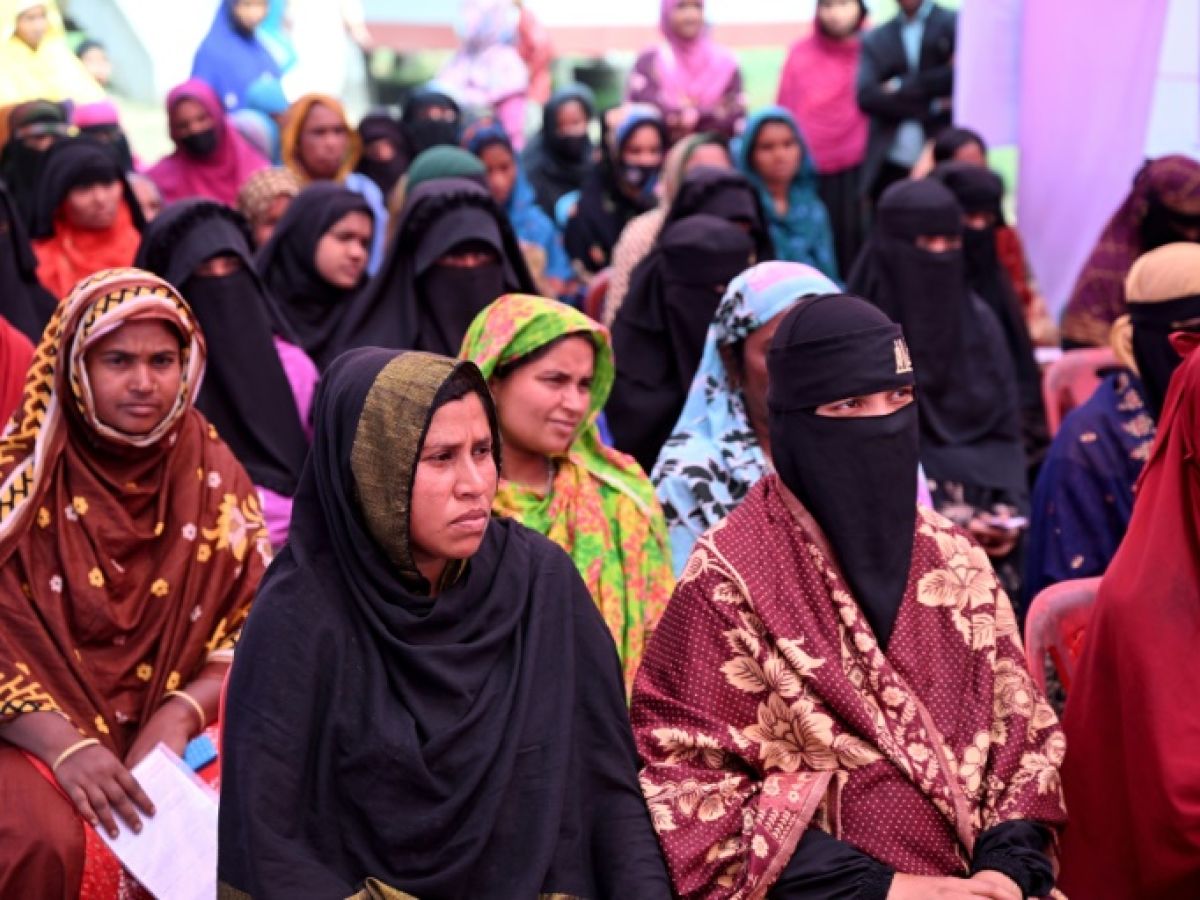She shifted in her chair and blushed with embarrassment, before breaking into a broad smile. "Giving birth is the most important and critical moment for a woman. I'm proud to be able to be with them at that moment."
At 25, Nargis Akhter doesn't have the title of midwife, let alone a diploma. But she more than takes on the responsibilities.
The mother of a daughter and a son, this Bangladeshi woman from the rural district of Bishwambharpur (north) became a "birth assistant" after a second complicated delivery.
"My husband sent me to a clinic to learn how to deliver babies. I liked it, so I decided to do it for others," she says. "Here, many women don't have access to quality care."
In five years, she has performed more than 400 deliveries.
In her village, lost in the middle of the rice fields, the young woman is the anonymous link in a long chain of care and solidarity woven by the Bangladeshi health authorities to protect mothers and their newborns.
In this poor, predominantly Muslim country, where tradition still dictates that women give birth at home, this network has worked miracles.
Over the past 20 years, the mortality rate for pregnant women has fallen from 721 to 123 deaths per 100,000 births. The mortality rate for babies has fallen from 691 to 20 deaths per 100,000 births, according to the World Health Organization (WHO).
But this progress remains fragile. It depends on the meager flow of public money, the generosity of NGOs and international organizations, and, above all, the commitment of those involved in the supply chain: authorities, health workers, and volunteers.
– All-comers –
That day, Nargis Akhter examines a mother and her daughter, born three weeks ago, in this "community clinic" in the village of Miarchior.
There are no white coats here, but volunteers trained like her in all aspects of pregnancy and birth.
"I wanted to give birth at home, but I wasn't healthy," says the mother, Mafia Akhter. "My first baby died, and I thought that if I didn't go to the hospital, it could happen again... So I gave birth here."
"I only accept a patient if I'm sure there's no risk," adds the birthing assistant. "Otherwise, I send her to a center where she can see a doctor or midwife."

This second curtain of the network, that of delicate cases, is the business of Dr. Abdullahel Maruf.
For four years, he has been running the district hospital, which sees up to 500 patients a day, two-thirds of them pregnant women and new mothers.
Every year, 7 to 8 women in labor die there. And for the doctor, that's far too many.
"We could easily reduce this figure if we had all the staff we need," he fumes. Of the five medical positions at his facility, only three are filled.
"We never leave a patient without care, but sometimes they have to wait a long time for treatment," acknowledges Dr. Maruf.
- " Victory " -
"You can't change the geography," he adds. "In an emergency, it takes time to get here." The region is drenched in rain for six months of the year. And during the dry season, remote villages are inaccessible to the district's only ambulance.
Rather than dwelling on his frustration, the doctor prefers to highlight the success of another aspect of his work: raising awareness among the population. Now, 70% of the district's women give birth in a health center rather than at home.
"This is our greatest victory," he boasts.
He himself does not count his time in preaching the good word to the four corners of the district.
"It is essential to report every pregnancy in your community so that everyone can benefit from the best care," Dr. Maruf told women in the town of Majhertek that day.
Like the hospital director, many people are taking part in this door-to-door health education campaign.
Among them is Alimgir Hosen, 36. This morning, he is explaining to a mother how to put on a harness to carry her premature baby next to her skin.
"I'm a bit of a prevention doctor," he boasts.
Despite the successes of this grassroots health network, Bangladesh remains far from the UN's 2030 targets for maternal and neonatal mortality.
"Challenges remain, both in terms of supply and access to care. Only 41% of women receive four prenatal visits," explains Golam Mothabbir of the NGO Save the Children.
– “Financial constraints” –
"And because of mentalities," he adds, "women still don't decide for themselves about their health. They depend on their husbands, or others."

Maya Vandenent of the United Nations Children's Fund (UNICEF) agrees. "Huge progress has been made (...) but the movement is slowing down."
One figure worries her. Bangladesh only spends 0.81 trillion pounds of its gross domestic product (GDP) on public health. "The government really needs to increase its contribution," she emphasizes.
In his office at the Ministry of Health in Dhaka, Special Advisor Sayedur Rahman readily concedes that public health is not necessarily the political priority of the moment.
Seven months after the fall of former Prime Minister Sheikh Hasina, the interim government of Nobel Peace Prize winner Muhammad Yunus is struggling to pull the country out of chaos and hold elections.
A doctor and academic, Professor Rahman lists his priorities as a specialist.
"We need resources to create a national ambulance network, recruit more anesthesiologists, and open operating rooms," he says. "Our financial constraints directly impact maternal and neonatal mortality rates."
Far from the capital, Nargis Akhter wants to believe that the fight is about to be won.
"Here, almost no women die in childbirth anymore," the volunteer emphasizes. "And for me, that's the most important thing."

